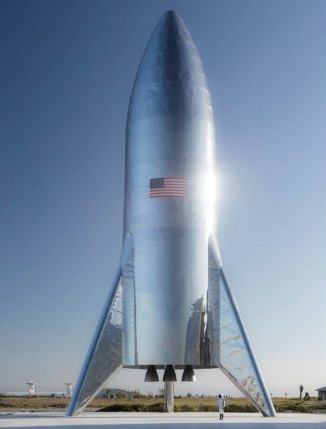Maiden flight of China’s Long March 5B rocket targeted for April
The new colonial movement: China is now targeting mid-April for the maiden launch of its Long March 5B rocket, which will place in orbit China’s new manned capsule on its first unmanned demo flight.
The article at the link, from China’s normally reticent state-run press, actually provides a great deal of information. First, it outlines the launch schedule for their space station, using the Long March 5B rocket:
China aims to complete construction of the space station around 2022. According to the CMSA, more than 10 missions are planned in the next three years to complete the construction and master technologies for in-orbit assembly and construction of large complex spacecraft, long-term manned spaceflight in near-Earth space and large-scale space science experiments.
…The space station will be a T shape with the Tianhe core module at the center and a lab capsule on each side. The core module — at 16.6 meters long and 4.2 meters in diameter, with a takeoff weight of 22.5 tonnes — will be the management and control center.
Second, the article confirms that the Long March 5B rocket will be used to launch all of China’s manned missions. This means they are dependent on their biggest and possibly most expensive rocket to make things happen, suggesting that either they will have to go slow or they have made a very big commitment to space. The quote above suggests the latter.
Third, the article reveals that their new manned capsule, which will weigh almost as much as a single station module on either their station or ISS, will be capable of carrying six astronauts, and that the descent module is designed to be reusable.
Finally, they confirm once again that they will also be launching “a large optical telescope” that will fly in formation with their space station. An earlier news article indicated that this telescope would have a mirror 12 meters in diameter, which would be five times bigger than the mirror on the Hubble Space Telescope. That same article however also noted major design issues.
Overall, it appears China is about to step out as a major space power, with capabilities that in many ways will exceed anything from either the U.S. or Russia.
The new colonial movement: China is now targeting mid-April for the maiden launch of its Long March 5B rocket, which will place in orbit China’s new manned capsule on its first unmanned demo flight.
The article at the link, from China’s normally reticent state-run press, actually provides a great deal of information. First, it outlines the launch schedule for their space station, using the Long March 5B rocket:
China aims to complete construction of the space station around 2022. According to the CMSA, more than 10 missions are planned in the next three years to complete the construction and master technologies for in-orbit assembly and construction of large complex spacecraft, long-term manned spaceflight in near-Earth space and large-scale space science experiments.
…The space station will be a T shape with the Tianhe core module at the center and a lab capsule on each side. The core module — at 16.6 meters long and 4.2 meters in diameter, with a takeoff weight of 22.5 tonnes — will be the management and control center.
Second, the article confirms that the Long March 5B rocket will be used to launch all of China’s manned missions. This means they are dependent on their biggest and possibly most expensive rocket to make things happen, suggesting that either they will have to go slow or they have made a very big commitment to space. The quote above suggests the latter.
Third, the article reveals that their new manned capsule, which will weigh almost as much as a single station module on either their station or ISS, will be capable of carrying six astronauts, and that the descent module is designed to be reusable.
Finally, they confirm once again that they will also be launching “a large optical telescope” that will fly in formation with their space station. An earlier news article indicated that this telescope would have a mirror 12 meters in diameter, which would be five times bigger than the mirror on the Hubble Space Telescope. That same article however also noted major design issues.
Overall, it appears China is about to step out as a major space power, with capabilities that in many ways will exceed anything from either the U.S. or Russia.

